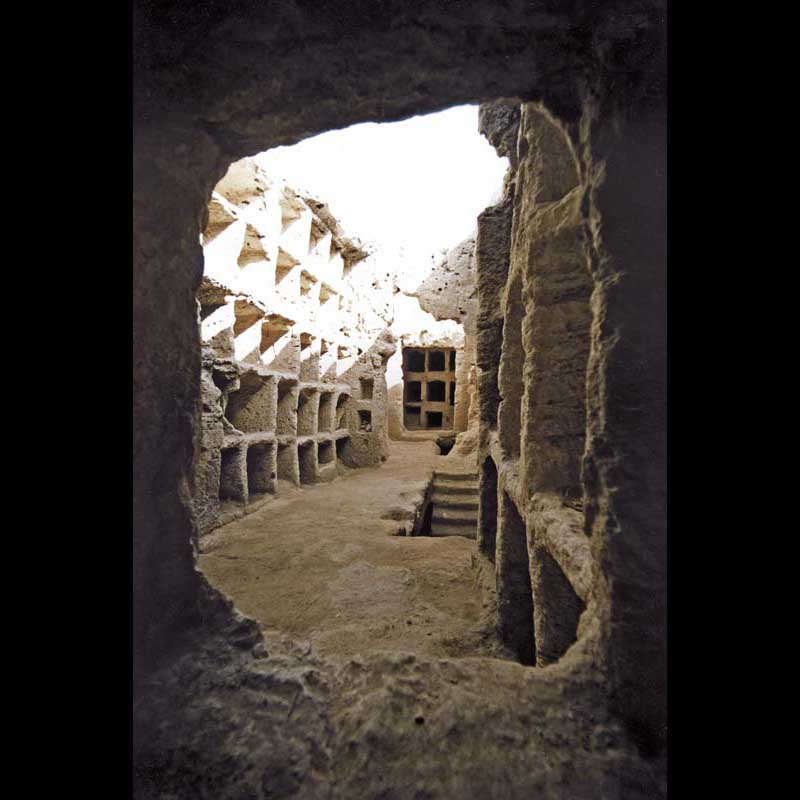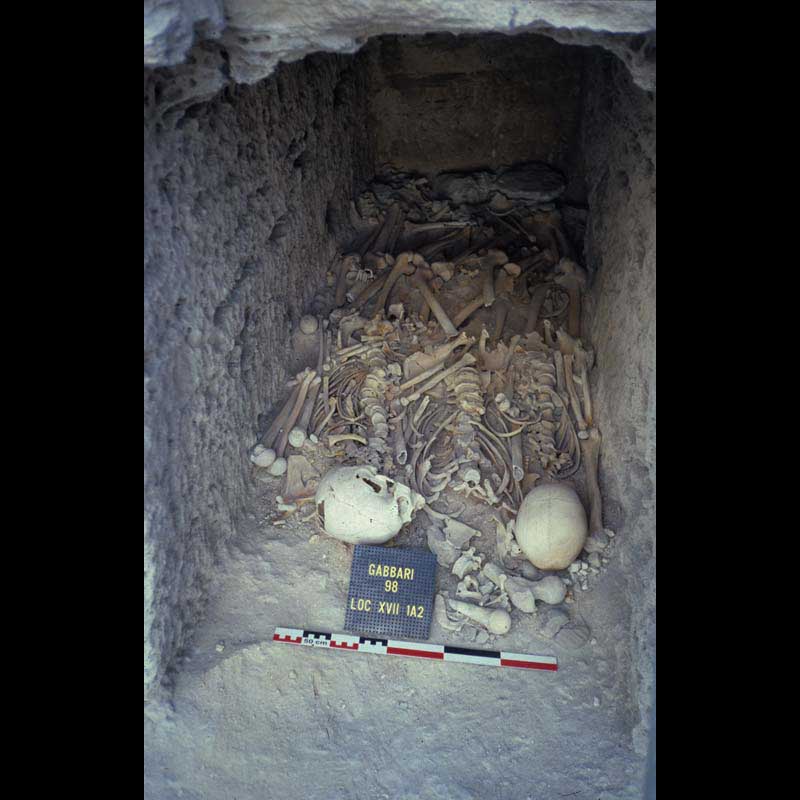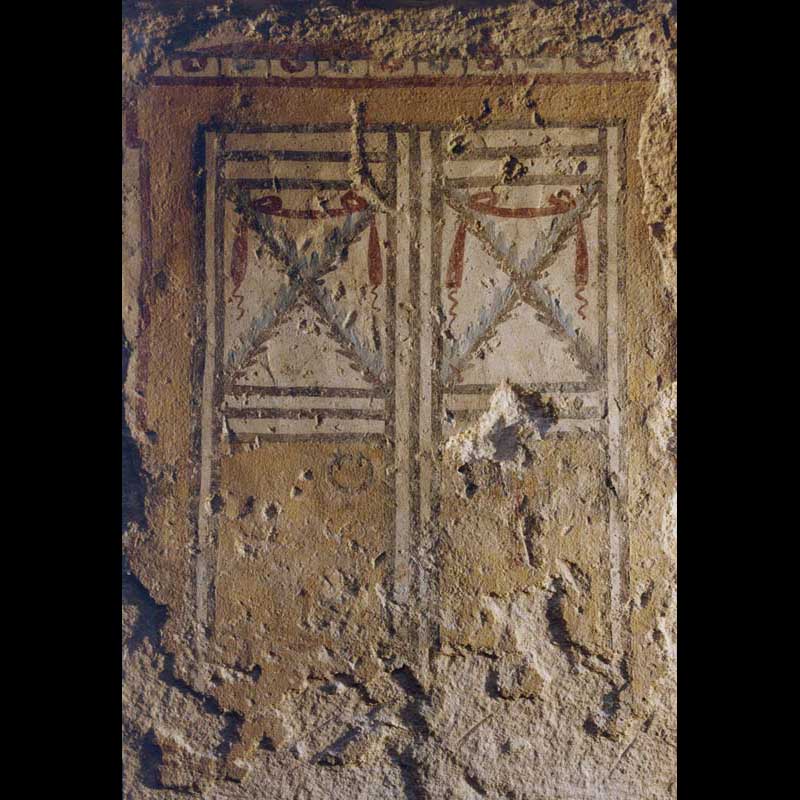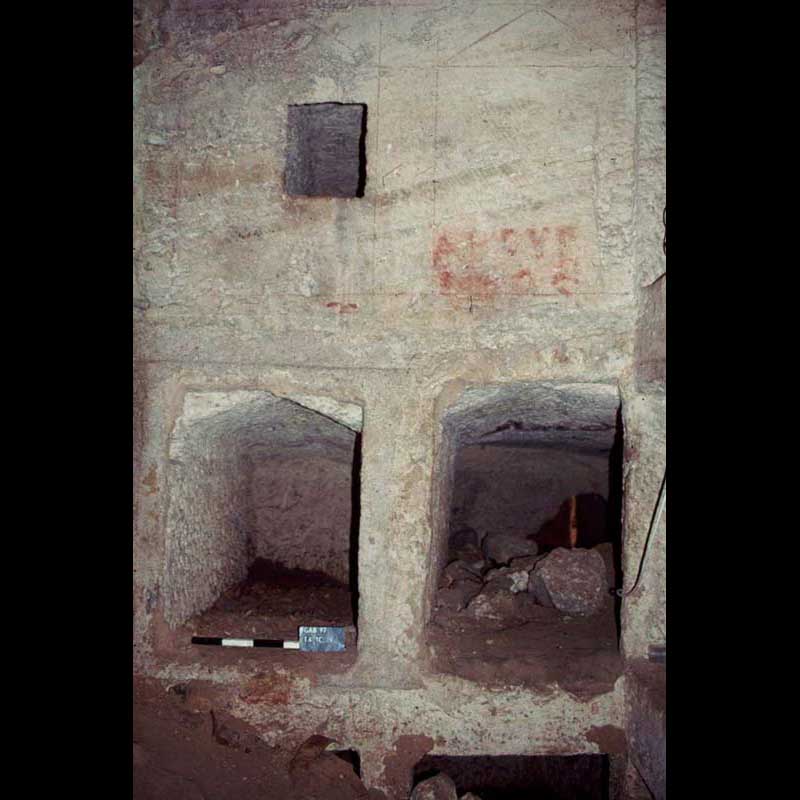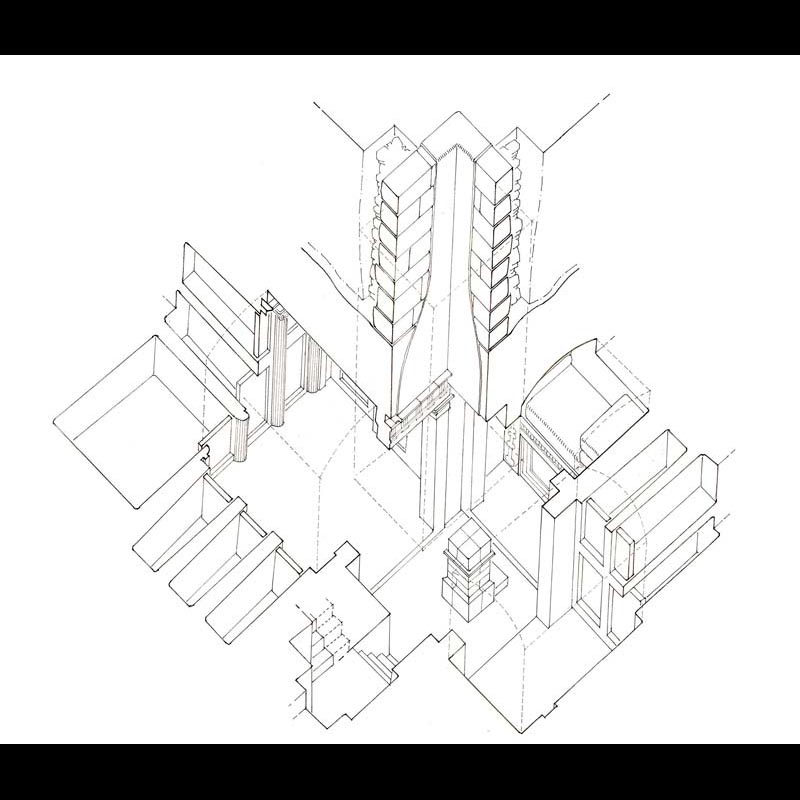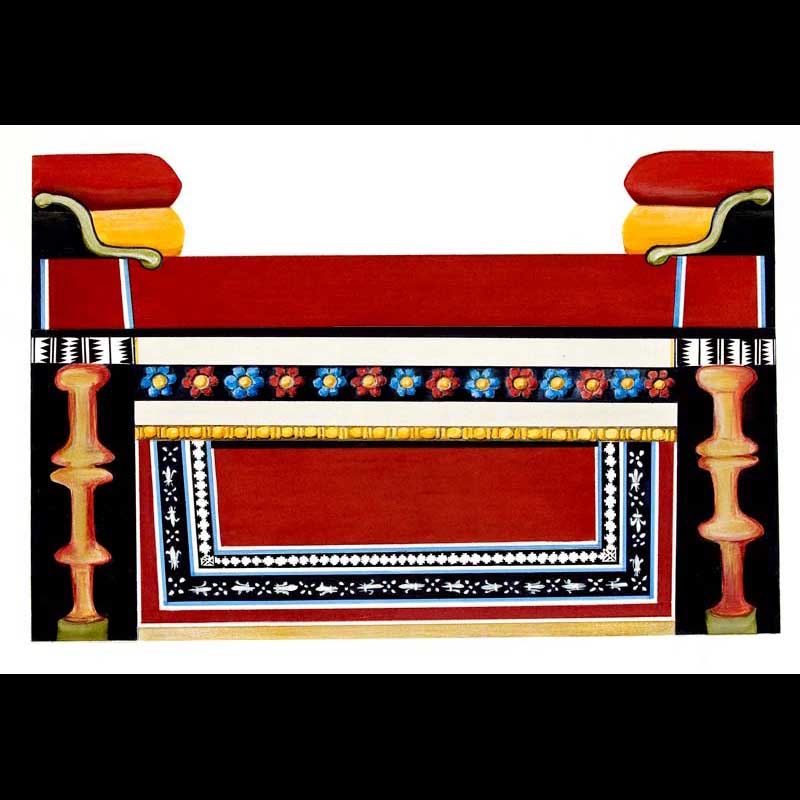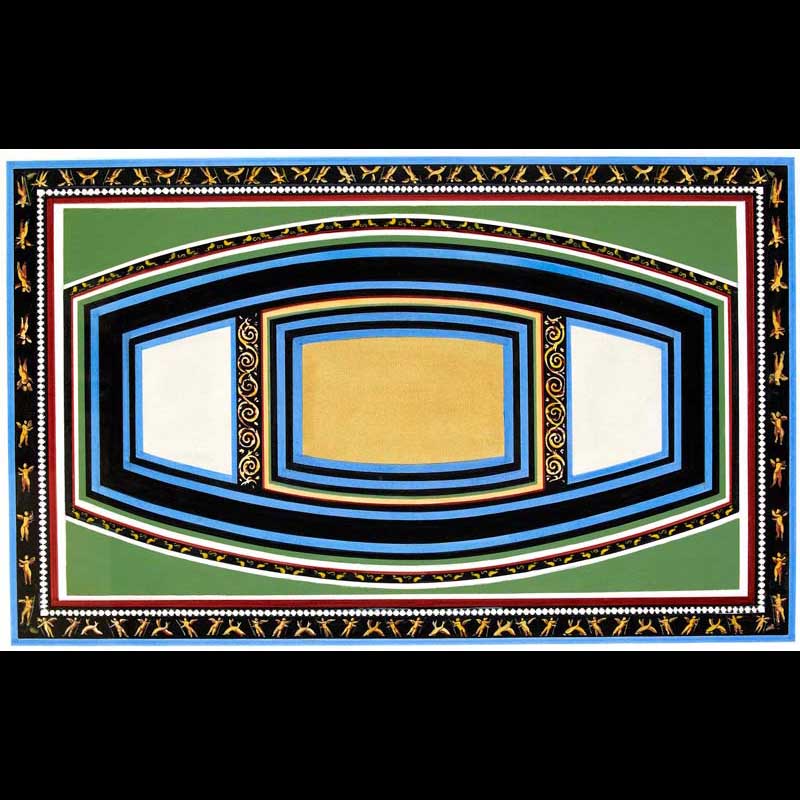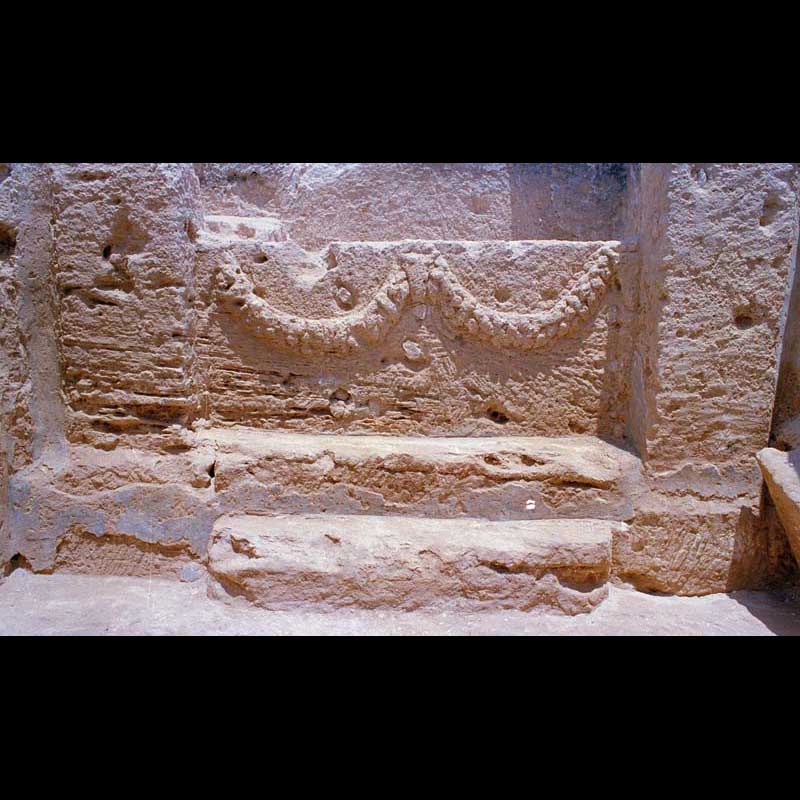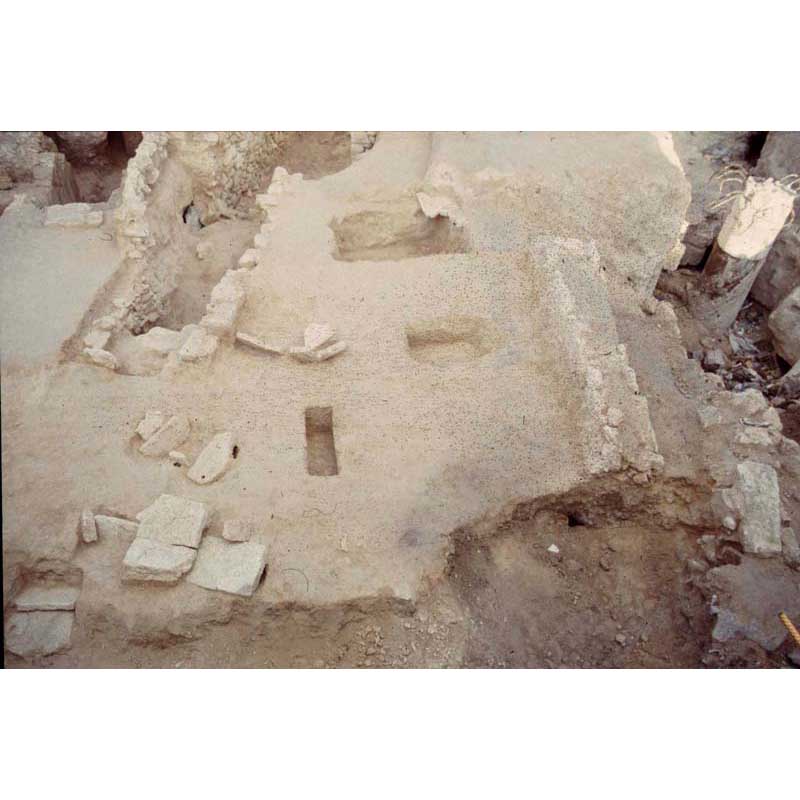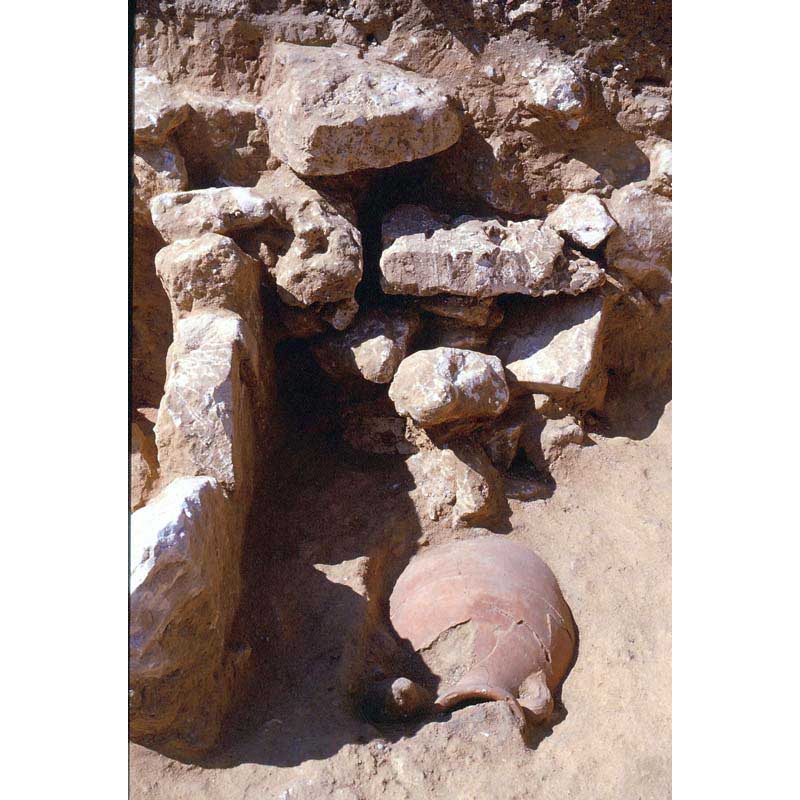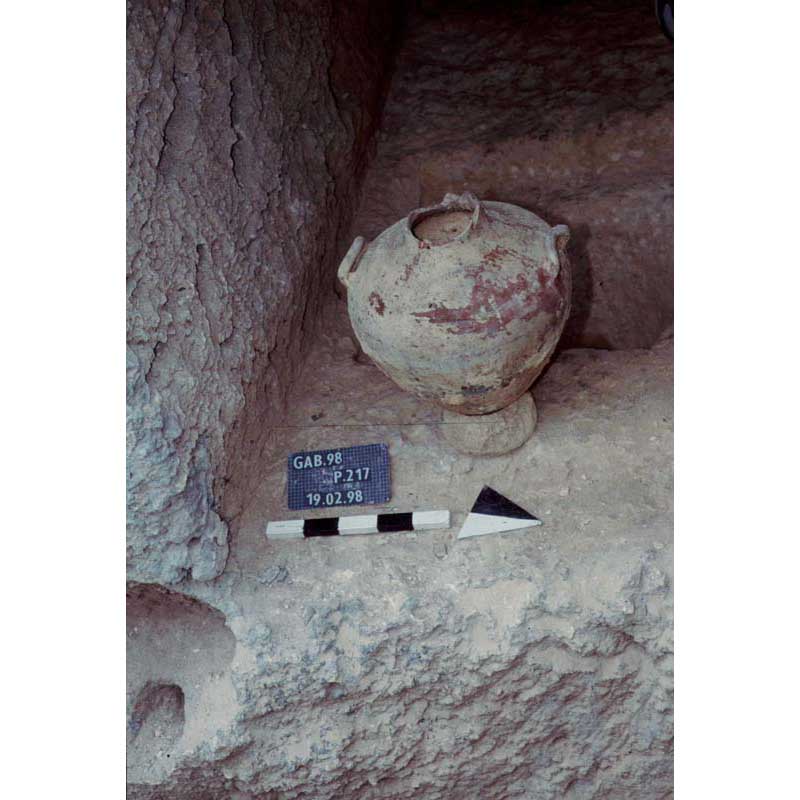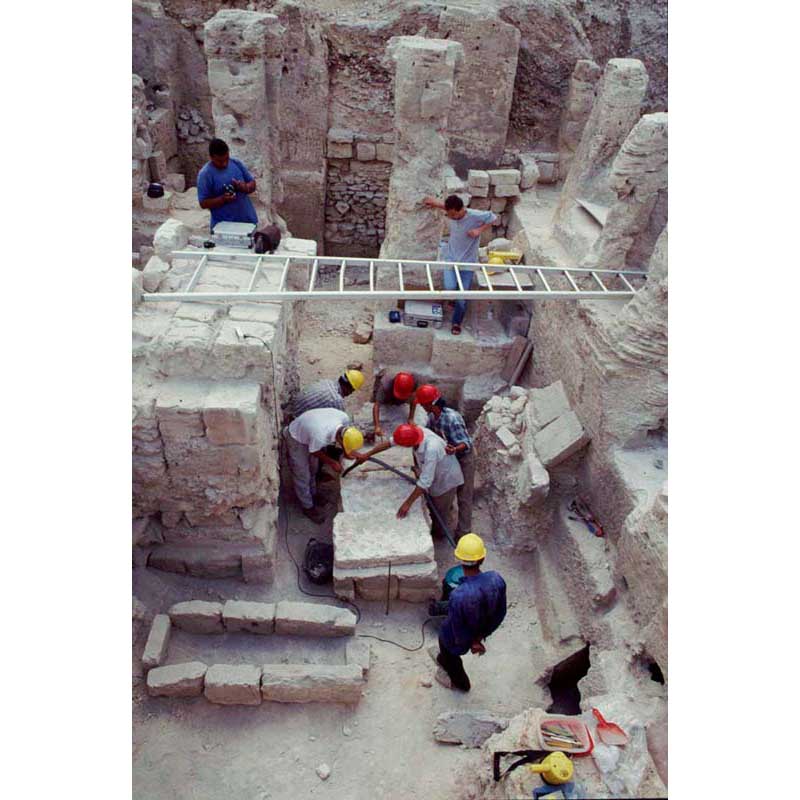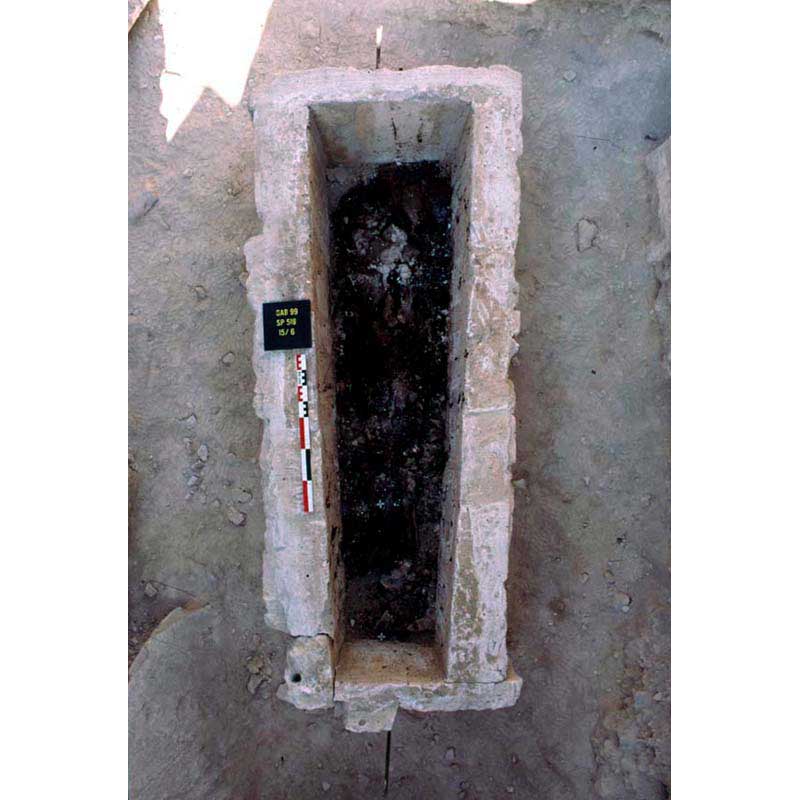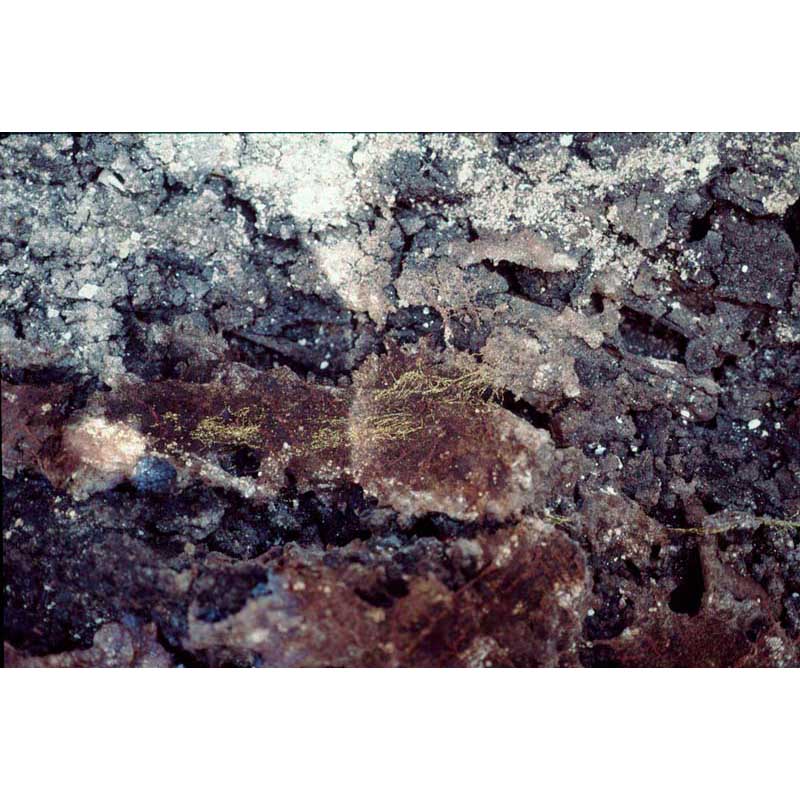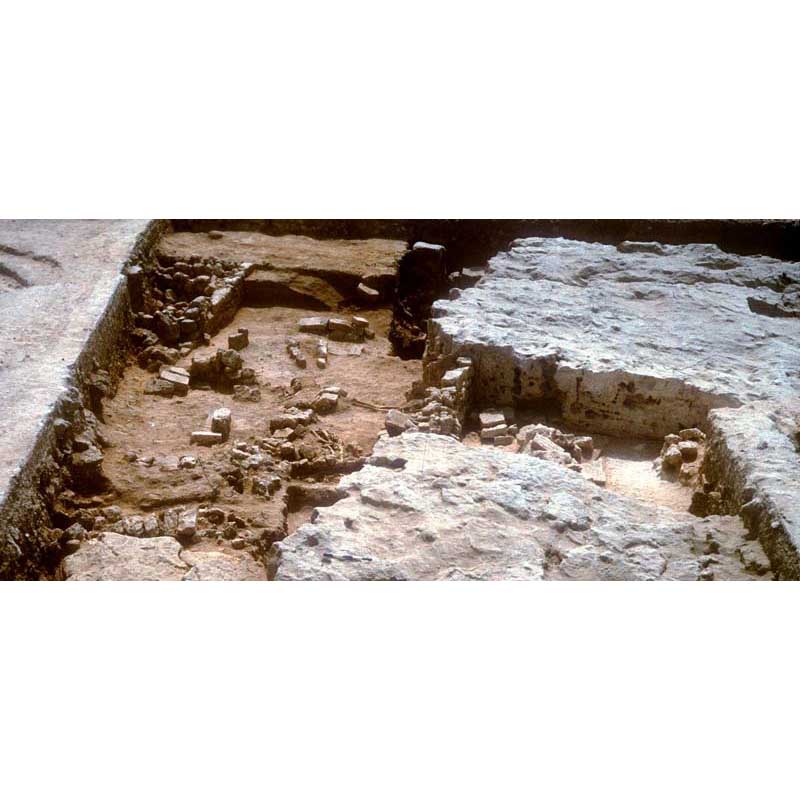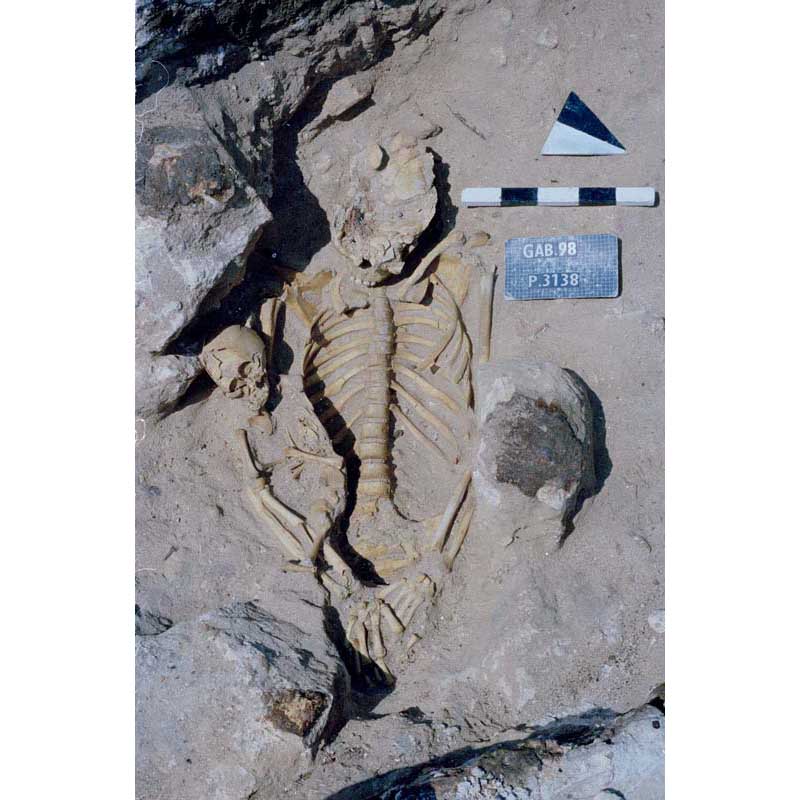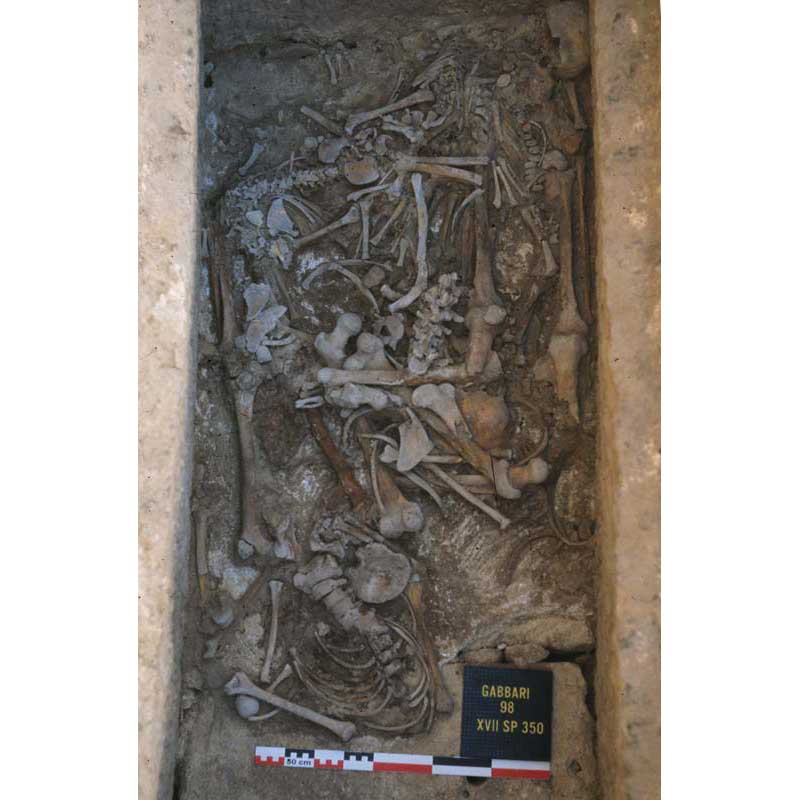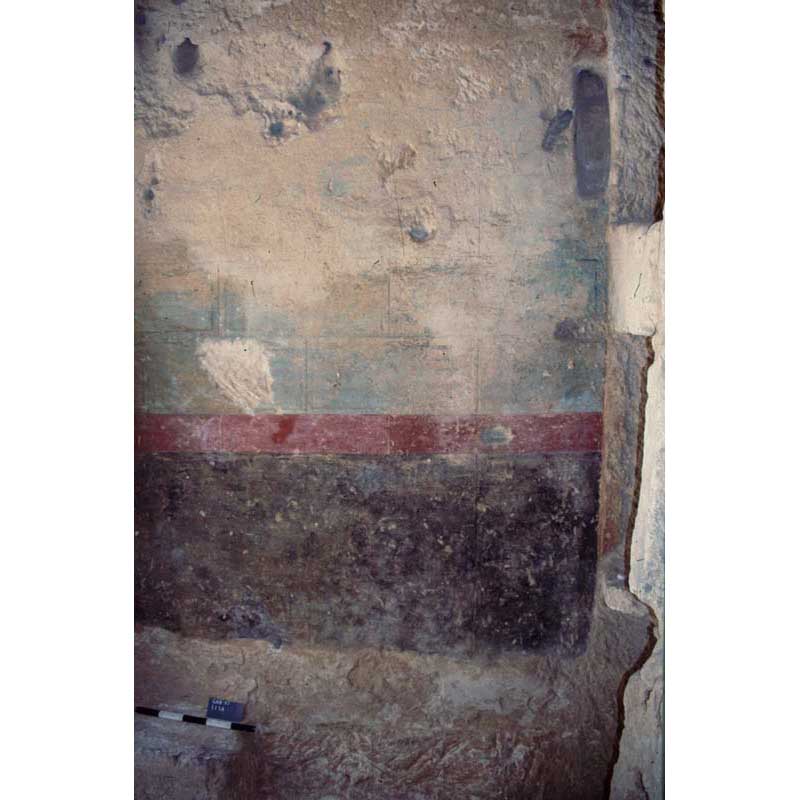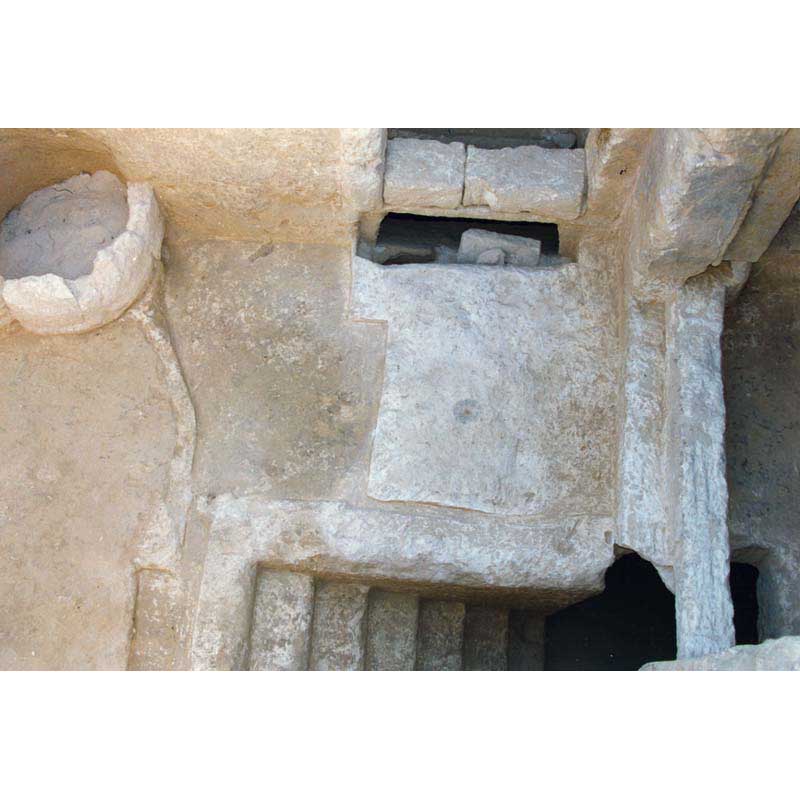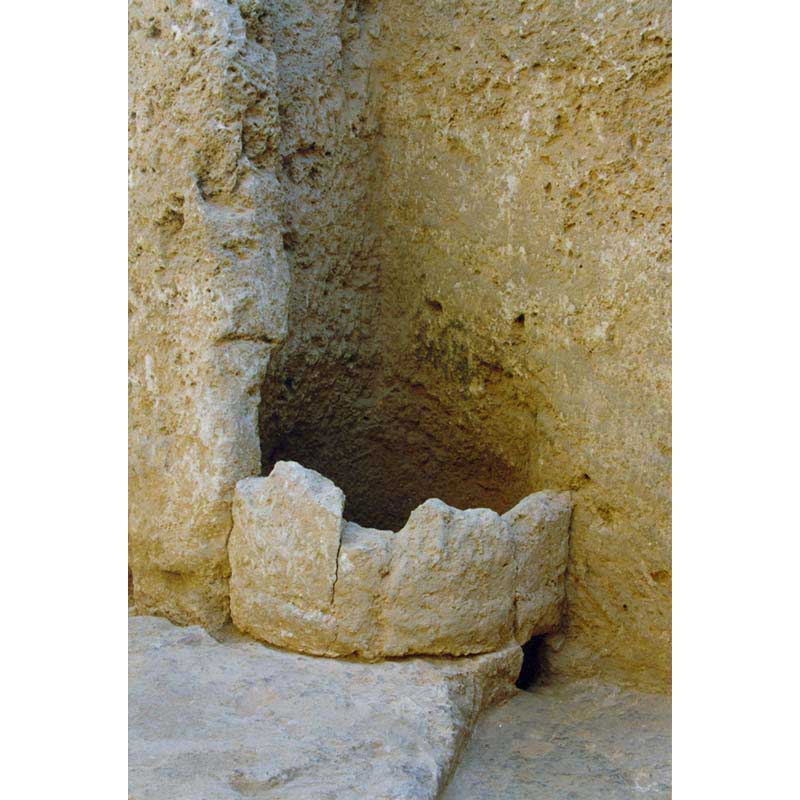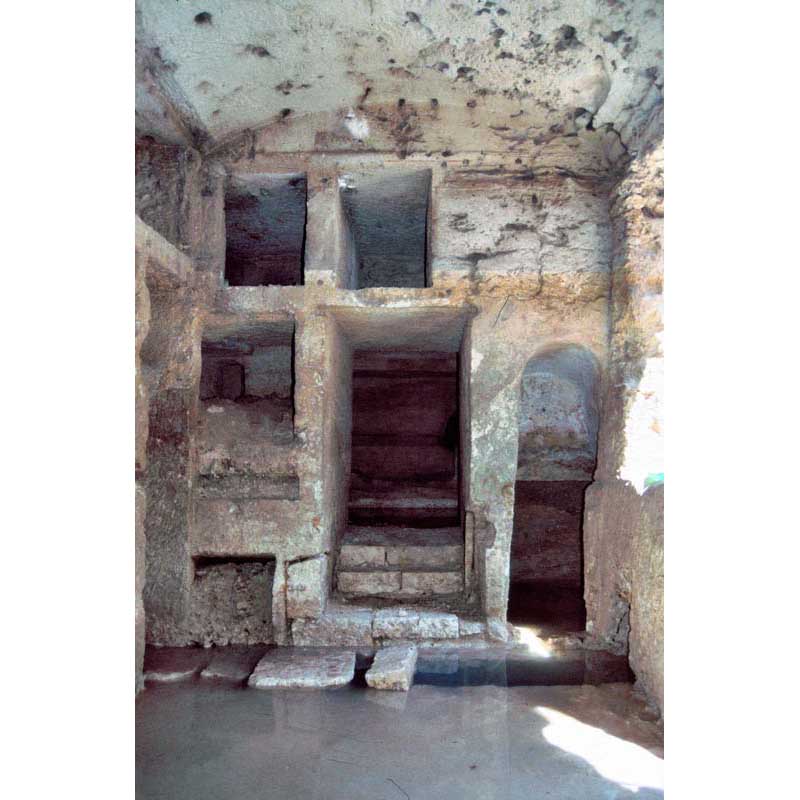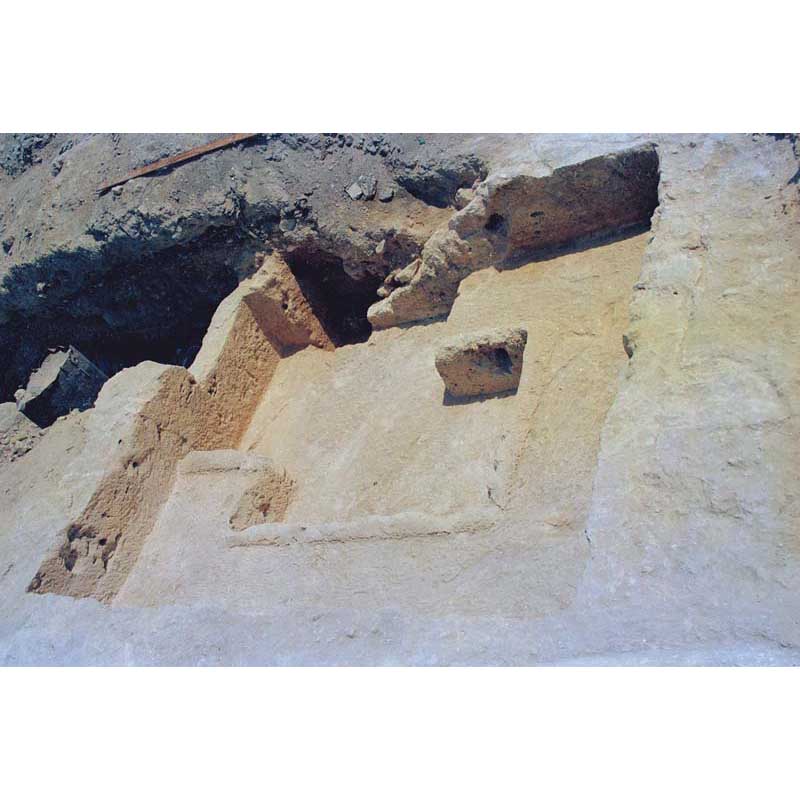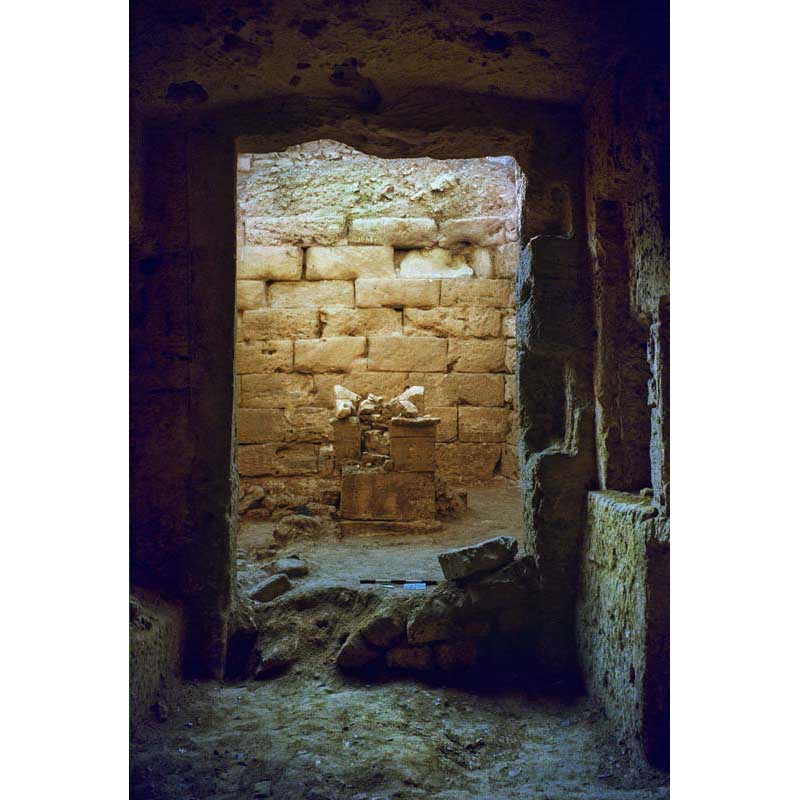Gabbari Bridge necropolis
This emergency excavation was conducted between July 1997 and February 2000 in the western necropolis of Alexandria in response to the discovery of hypogea during the construction of a motorway bridge linking the Cairo motorway to Gate 27 of the port. The site, roughly oriented north/south, occupied a strip measuring 136 m by 21 m, almost 3,000 m2. In addition to a series of surface cemeteries, it revealed a collection of over 40 hypogea dating from the Early Hellenistic Period. We are not dealing here with an isolated tomb or a group of four or five hypogea, but with a veritable network of tightly linked structures that would enrich our knowledge of the different types and modes of Alexandrian burial. The novelty of this site also lay in the fact that the necropolis was used for a long time, from the beginning of the 3rd century BC until the 7th century AD, and in the clear changes that this period witnessed.

Invention of the collective grave and privileged burials
The excavations of the Gabbari Bridge necropolis have revealed that as early as the 3rd century BC, the Alexandrians, no doubted constrained by a steadily growing population and the limited space available for cemeteries on the taenia, that narrow strip of land between the sea to the north and the lake to the south, had invented the concept of collective tombs with superimposed rows of loculi (a niche perpendicular to the wall of the hypogeum measuring 2 m long by 60 cm wide by 80 cm high), making it possible to bury a larger number of deceased. The loculus became the burial place for an entire family, with bodies carefully arranged to take up less space so that new deceased could be introduced. It was closed by a slab painted with the image of a door and then reopened each time it was reused. The digging of hypogea and loculi was the work undertakers, sometimes with evocative names such as Anoubas, who claimed ownership of the walls to be pierced and who would mark out and number in red paint the niches to be cut. The plans varied, from simple rooms to complexes of several rooms opening onto courtyards through bays, and even miniature elite tombs. In the Hellenistic Period, the privileged status of a deceased person was marked by the presence of a sculpted and painted funerary bed, following the Macedonian model. The bed is carved into an alcove, open to the rest of the tomb, whose ceiling may be painted to resemble an overhead canopy.
At the end of the Hellenistic Period or at the very beginning of the Imperial Period, the funerary bed disappeared and was replaced by moveable sarcophagi or sarcophagi carved inside large arcosolia or low-vaulted niches. A new architectural model was invented in Alexandria, which was to be very successful throughout the Mediterranean: a square room with sarcophagus niches on three sides, each sarcophagus containing superimposed burial spaces separated by limestone slabs.
Archaeo-anthropological study: surface cemeteries and hypogea
The long occupation of the necropolis meant that the archaeo-anthropological study of the site varied greatly according to chronological period: 136 individuals were found from the Hellenistic Period, 101 from the Imperial Period and 707 from the Late Roman Period.
The Hellenistic period is represented by three surface cemeteries. In two of them, where the tombs date back to the 2nd century, the good quality of the marine calcarenite (or sandstone) made it possible to dig pit tombs or corridor tombs (dromos), which were covered or closed with stone slabs, and where young and old were buried (Sectors 2 and 5, see Necropolis 1 and 2). In the third cemetery (Sector 6, Necropolis 4 forthcoming), which can be dated to the 2nd-early 1st century BC, the bedrock has disintegrated into sand, so it was not possible to distinguish the boundaries of the pits, which were not covered by flagstones. Both children and adults were buried here, but one sector seems to have been reserved for children. In the hypogea, few burials from this period were still in place, but cremations were directly attested by 11 whole vases containing bones, and at least 17 fragmentary vases. These are Hadra hydria, or vases with painted decoration on a white background, black varnished vases with appliqué decoration, or common hydria. Cremations were also evident in hypogea in the form of niches to accommodate vases cut into or projected onto the walls of tombs, or in the interior of loculi (Necropolis 3 forthcoming). The practice of mummification was dated by stratigraphy of the 2nd century BC for the first time in Alexandria, thanks to the discovery of cist burials containing mummified bodies in a hypogeum whose courtyard had been dug into in order to accommodate new burials
The Imperial Period is poorly represented; we know it mainly from hypogeum burials, such as Tomb B8, which was built during this period and which contained vestiges of mummification and gilding.
The largest number of individuals and the greatest variety of tomb types date to the Late Roman Period. A large surface cemetery (Sector 3, Necropolis 4 forthcoming) and smaller cemeteries located at the entrances to hypogea display tombs with unadorned pit burials or with rubble stone surrounds and roofs, and a few rare built tombs. These were usually individual burials. Burials in hypogeum contexts are quite different, with multiple burials in loculi, vaults and sarcophagi; archaeo-anthropological studies have also revealed the presence of ossuaries. One of the hypogea revealed the exceptional practice of burying deceased children in the same space: no fewer than 35 very young children, wrapped in plastered shrouds, all aged under 2 or 3.5 years, with the exception of one aged between 5 and 7.
Commemorating the dead
Although few burials have been found intact, making it difficult to study the funerary furnishings deposited with the deceased according to period, sex and age, it has been possible to observe certain commemorative rites. In these hypogea, it was possible to walk around the tombs of loved ones and perform the necessary rites, such as libations, laying garlands and ribbons, and burning incense. Hypogea usually had a courtyard into which one descended by a staircase, and often contained commemorative areas with benches, as well as access to water via wells or cisterns. They may also have included more elaborate banqueting rooms, similar to reception rooms in town houses, either inside the hypogeum or above ground. In the courtyard of several tombs, we can see the presence of an altar on which sacrifices were performed in honour of the deceased. Exceptionally and uniquely, one of these altars was found with the remains of various sacrifices still in place, either on the altar itself or in small pits dug into the courtyard floor. Analysis of these remains by archaeozoologists have revealed that the preferred species were swine and cockerel, and that fish was also present. Some of the parts were eaten on the spot, while others were burnt in honour of the deceased. It would appear that no strict selection of anatomical parts was made beforehand.
The wealth of discoveries made in the Gabbari necropolis has led to the publication of two monographs and a whole series of articles, an extract of which is given below. It has also enabled the CEAlex to participate in two Mediterranean-wide programmes. The ANR Children and Death in Antiquity. involved three conferences and the creation of a database on child burials. As part of the research programme entitled Des espaces et des rites : pour une archéologie du culte dans le monde méditerranéen, led by the Ecole française d’Athènes and the Ecole française de Rome, a special symposium was co-organised with the CEAlex on the archaeology of funerary worship.
Two monographs are currently being prepared, one on cremation in the Hellenistic and Roman Periods, and the other on Sectors 3, 4 and 6 of the necropolis.
Further reading:
M.-D. Nenna, « Archaeology of the funerary cult in Hellenistic and Roman Alexandria. Architectural and material arrangements», in M.-D. Nenna, S. Huber et William van Andringa (éd.), Constituer la tombe, honorer les défunts en Méditerranée antique, Études Alexandrines 46, Alexandrie, Centre d’Études Alexandrines, 2018, p. 65-116.
S. Lepetz, B. Clavel, « A Hellenistic funerary altar and sacrificial remains in the Necropolis of Alexandria », in M.-D. Nenna, S. Huber et William van Andringa (éd.), Constituer la tombe, honorer les défunts en Méditerranée antique, Études Alexandrines 46, Alexandrie, 2018, p. 117-140.
G. Alix, É. Boës, P. Georges et M.-D. Nenna, « Les enfants dans la nécropole gréco-romaine du Pont de Gabbari à Alexandrie : problématiques et études de cas », in M.-D. Nenna (éd.), L’Enfant et la mort dans l’Antiquité II. Types de tombes et traitement du corps des enfants dans l’antiquité gréco-romaine. Études Alexandrines 26, Alexandrie, 2012, p. 79-137.
H. Silhouette, « Le secteur 6 de la nécropole du Pont de Gabbari, Alexandrie : une zone réservée aux enfants ? », in M.-D. Nenna (éd.), L’Enfant et la mort dans l’Antiquité II. Types de tombes et traitement du corps des enfants dans l’antiquité gréco-romaine. Études Alexandrines 26, Alexandrie, 2012, p. 139-150.
Fr. Blaizot, « Le loculus A1 de la salle B28.3, nécropole du Pont de Gabbari, Alexandrie : une sépulture collective réservée aux très jeunes enfants », in M.-D. Nenna (éd.), L’Enfant et la mort dans l’Antiquité II. Types de tombes et traitement du corps des enfants dans l’antiquité gréco-romaine. Études Alexandrines 26, Alexandrie, 2012, p. 151-208.
M.-D. Nenna, « Modèles alexandrins ? Apport des fouilles et prospections récentes dans la nécropole occidentale d’Alexandrie à la connaissance de l’architecture funéraire hellénistique et impériale », in D. Michaelides, V. Kassianidou et R.S. Merillees (éd.), Egypt and Cyprus in Antiquity, Nicosie, 2003, Oxford, 2009, p. 188-205
M.-D. Nenna, « L’eau dans la nécropole du pont de Gabbari (Alexandrie, Égypte) », in A.-M. Guimier-Sorbets (éd.), L’eau, enjeux, usages et représentations, Quatrième colloque de la Maison René-Ginouvès, Nanterre Juin 2007, Paris, 2008, p. 229-238.
J.-Y. Empereur, M.-D. Nenna (éd.), Nécropolis 2, Études Alexandrines 7, Le Caire, 2003.
P. Georges, E. Boës, G. Alix, A. Schmitt, « Des momies éphémères et des os pour l’éternité. La gestion paradoxale de la Necropolis d’Alexandrie à l’époque romaine », in P. Ballet, P. Cordier et N. Dieudonné-Glad, La ville et ses déchets sans le monde romain : Rebuts et recyclages (Poitiers 2002), Archéologie et histoire romaine 10, Montagnac, 2003, p. 277-301.
J.-Y. Empereur, M.-D. Nenna (éd.), Nécropolis 1 : Tombes B1, B2, B3, B8, Études Alexandrines 5, Le Caire, 2001.



